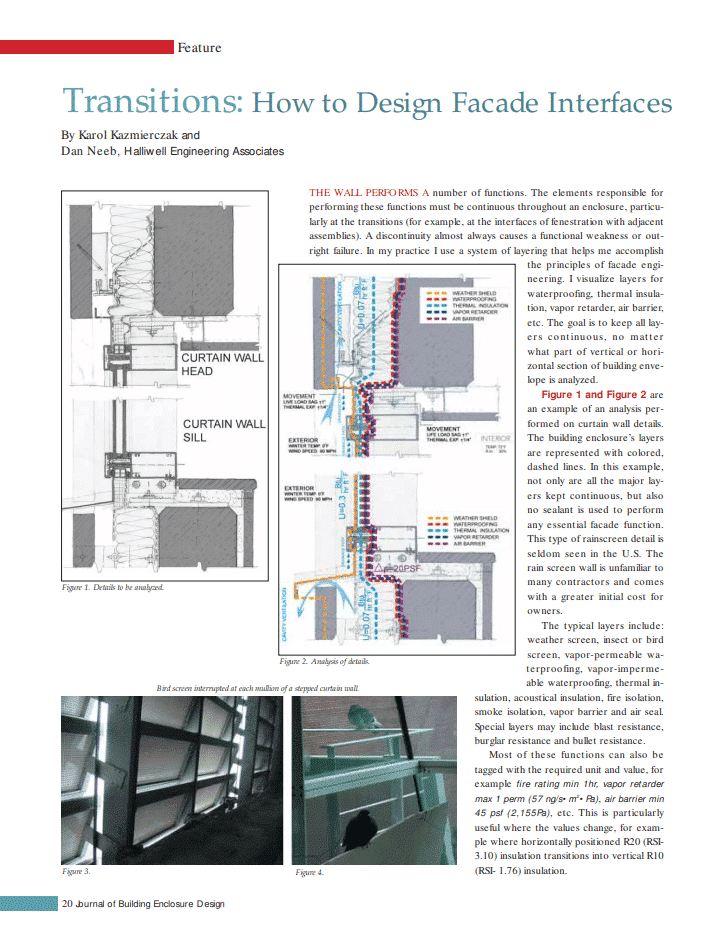How to Design Facade Interfaces – A Summary
Today’s featured article is about designing continuous facade interfaces. Karol Kazmierczak and Dan Neeb show how discontinuities almost always cause functional weaknesses or, even worse, outright failure, and they explain how to use a system of layering to ensure design continuity. The system involves visualizing layers for waterproofing, thermal insulation, the vapor retarder, and the air barrier, making sure all layers are continuous in every direction. There should be no need for sealant for any essential facade functions.
This principle of continuity holds true at every scale. At the scale of the entire building, designers have to think about where layers are located relative to all rooms and partitions. A common mistake is to forget spaces above suspended ceilings or overhangs, resulting in frozen or burst plumbing in cold climates (a leading cause of mold in New York City). Continuity is also important through movement joints. The average curtain wall has several joints with various directions and magnitudes of movement. Each layer has to accommodate the designed movement.
The authors also show how careful selection of materials can improve design continuity and building longevity. Designers need to consider that some materials have to perform more than one function. For example, a perimeter membrane can act as a waterproofer, vapor retarder, and air barrier. Given that the air barrier is the most demanding function, the authors recommend a thick, puncture- and tear-resistant elastomeric membrane rather than commonly used metal flashing.
This design approach is likely unfamiliar to many readers in the U.S. And, as you might have guessed, designing facades this way tends to increase costs. But design is all about compromises. Unfortunately, many popular design practices, materials, and systems simply don’t work, and there is often no economical method to solve a problem while keeping layers continuous. However, every choice has two price tags attached: the initial cost and the long-term cost. Experienced designers know that a more expensive design method will almost always be longer-lasting and save money in the long run.
Click here to read the full article for technical details and specific examples.

